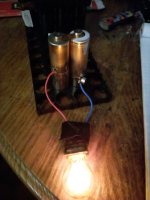eMark
100 kW
For a self-discharge test you need to recharge a cell to resting 3.60V (or your preferred pack storage voltage) then record amount of discharge voltage after 3, 5 and ten days to get a better idea of degree of "regenerating".izeman said:They show different grades of self discharge. Some are down by almost 0.15V after 3 days. They now have been discharged to 2.8V.
Will monitor for some more days, then do a discharge to 2.5V and see if this makes any difference.
FWIW, goatman's "regenerating" tests by first discharging to 2.5V were based on my previous 30Q experimental tests discharging to 2.5V. Then i charged cell(s) to at least 3.60V resting voltage before measuring amount of declining cell self-discharge voltage after 5 days and then voltage again at 10 days. From my rather extensive testing there was a noticeable improvement, but it was short lived. More "regenerative" testing needs to be done so your testing is appreciated.
FWIW, cells that are down by 0.15V or 0.10V(100mV) after only 3 days are **poor** candidates for "regenerating", but your testing may prove helpful / hopeful :thumb:



